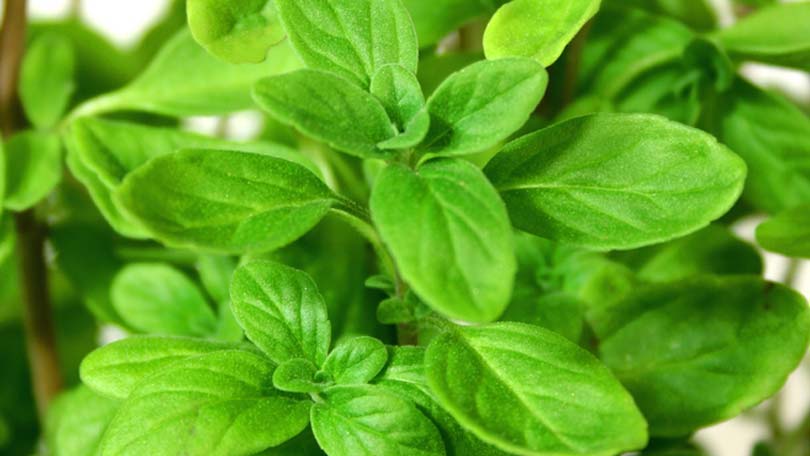
Marjoram, or Origanum majorana, is a perennial herb in the mint family and a very close relative of the herb oregano – marjoram is now classified as species of oregano itself, though it was once considered only a sister species. Marjoram is frequently mislabeled as oregano, making it somewhat difficult to track down on occasion. Though it is less utilized than its popular relative, marjoram has a mild quality which allows it to be very versatile and is therefore an important culinary herb.
Characteristics
A small herb usually standing no higher than one to two feet in height, marjoram comes in several varieties. The most utilized variety, sweet marjoram, is native to Southern Europe and parts of Western Asia. It has brightly colored green or gray-green leaves which can form characteristic knots – it is sometimes referred to as knotted marjoram. It has been used for over two thousand years by continental Europeans and Mediterraneans, and should not be confused with wild marjoram. Wild marjoram, which is frequently mislabeled as oregano, is cultivated mostly in Northern Europe and parts of North America; it is larger than its sweet sister and can reach heights of up to six feet. Winter marjoram is one other utilized variety and is preferred in Italy and Greece.
Marjoram has a mild, fresh, citrusy-floral flavor with green notes and a slightly penetrating quality reminiscent of basic oregano. Its leaves have a sweet, aromatic bouquet with notes of pine, and have been likened to that of thyme. Interestingly, marjorams will not only vary in flavor due to variety but also due to growing conditions – two sweet marjoram plants grown in different ways under varying conditions will yield different flavors and aromas. The plant does not take well to cold and is easily damaged or killed by frost.
Common Uses
Despite the issues with classification and name confusion, marjoram is still an important herb used in most European and North American kitchens. Marjoram is rarely used as a solo herb and is best suited to herb blends or herb-based dishes; it is a part of the coveted herbes de provence blend of French cuisine and is used in Middle Eastern Za’atar (marjoram, oregano, thyme, sesame, sumac). It can also be used in a traditional bouquet garni for seasoning soups, stocks, braises, and marinades. Marjoram goes nicely in fresh or dried in tomato based dishes, vegetable dishes, stuffing, sausages, chowders, breads, most meat dishes, and in seasoned or cured meats. It pairs nicely with basil, thyme, onion, garlic, and parsley, and works well in liquids for pickling or marinating.
Marjoram and oregano both were believed to be a symbol of good luck and joy; in Ancient Greece it was believed to be a sign of eternal happiness if a plant grew out of one’s grave after burial. The Egyptians also used the herb in the embalming process for similar reasons. Marjoram’s delicate aroma has been used in the cosmetics and fragrance industry to scent soaps, sprays, wreaths, and satchels for clothing.
Use and Storage
Marjoram is not as easily bought fresh as it should be, since mislabeling is still and issue in North America. It’s best to go to a reliable farmer’s market or specialty store. Marjoram will keep fresh for a few days in the fridge before deteriorating. Dried marjoram, by comparison to other herbs, is a remarkably good alternative – it holds its aroma and flavor much longer than other herbs, and the flavor is not significantly less potent than fresh. Dried marjoram should be stored in an airtight container out of direct sunlight.
Use It:
- to season any meat
- with vegetables such as potatoes, squash, and zucchini
- in tomato or tomato based dishes
- in soups, stocks, or marinades, particularly in a bouquet garni
- in delicate herb omelets or quiches
- with fish and seafood
- in stuffing for meat or baked vegetables
- in stews or casseroles
- to season ground meat
- in sausage or jerky
- in herb blends for cooking
- in herb breads
Recipe with Marjoram
Cheesy Herbed Marinara Sauce
1 15 oz. can tomato puree
One small can crushed tomatoes
1/4 cup water
3 cloves garlic, minced
1/4 cup parmesan cheese, grated
¼ cup grated asiago cheese
1 teaspoon marjoram
1 teaspoon dried basil
1 tablespoon chopped fresh basil
½ teaspoon red pepper flakes
Salt and pepper to taste
Simmer tomato puree, crushed tomatoes, and water in a medium to large saucepan. Add garlic, dried herbs, salt, and pepper. Simmer 5-10 minutes on low heat, then taste; adjust herbs if needed. Simmer another 10 minutes. Remove from heat. Immediately stir in cheese until blended. Let stand for a few minutes, then pour over pasta. Garnish with fresh basil and more cheese if desired.
